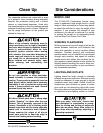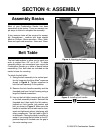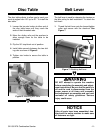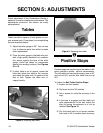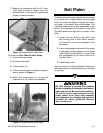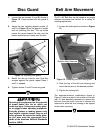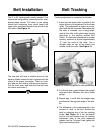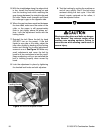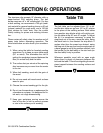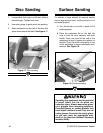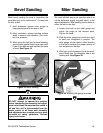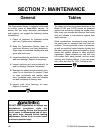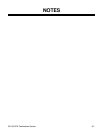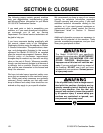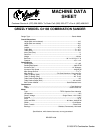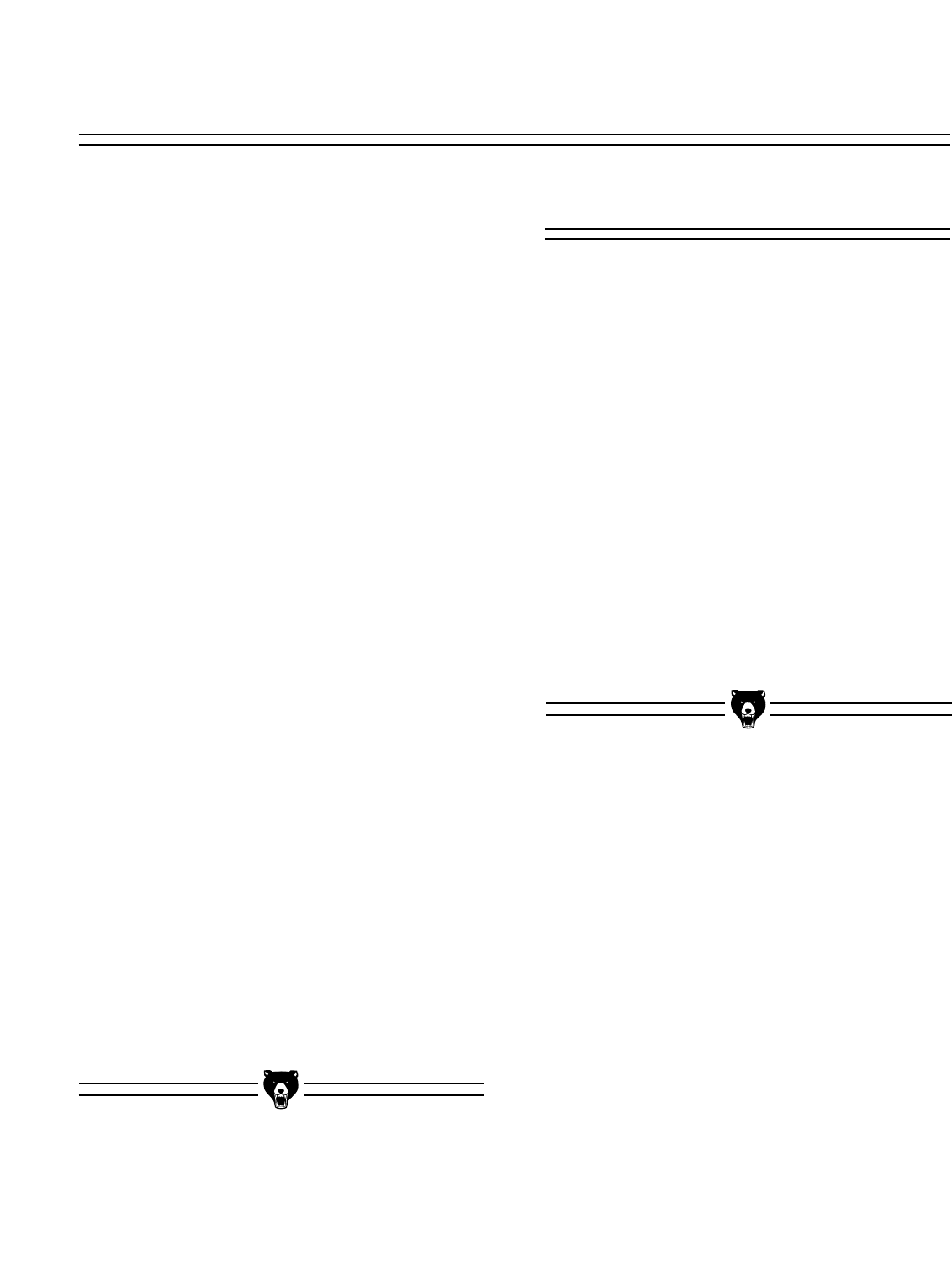
G1183/1276 Combination Sander -17-
SECTION 6: OPERATIONS
The aluminum disc accepts 12" diameter cloth or
paper-backed PSA sanding discs. The belt
sander requires a 6" x 48" sanding belt. For disc
or belt sanding, we recommend a 100-grit (medi-
um) material for general sanding chores, a 60-grit
(coarse) material for rough work, and a 150-grit
(fine) surface for finish work. See the current
Grizzly catalog for prices and ordering informa-
tion.
Please review all safety rules for sanders and all
power tools before attempting operation. The
hints listed below are also worth your considera-
tion:
1. When using the table for beveled sanding
operations, try to keep an open table angle
(90˚ or more). This eliminates the risk of
getting the workpiece jammed between the
disc (or vertical belt) and the table.
2. The surface feet per minute of the spinning
disc increases as you move from the center
to the rim.
3. When belt sanding, sand with the grain of
the wood.
4. Do not over-sand soft woods such as bass
wood or pine.
5. Choose the correct sanding grit for the job.
6. Do not use the sander as a replacement for
a bandsaw or a planer. It is designed for fin-
ish work, not rough dimensioning.
7. Keep your workpiece moving across the
face of the disc or belt to prevent grooves
or ruts in the surface you’re sanding.
The belt table can be adjusted from -30˚ to 45˚
and the disc table can go from -20˚ to 45˚ relative
to the plane of the sanding surface. Both tables
have positive stop blocks which will quickly posi-
tion the table at the 90˚ and 45˚ angles. To adjust
the tilt it is sometimes necessary to swing the
stop block out of the way, move the table, swing
the block back in, then contact the stop block. If
angles other than the preset are desired, swing
the stop out of the way and use the angle scale or
a bevel gauge to set to the position needed. Lock
the handle (on the belt table) or the star knob (on
the disc table) firmly in position.
Whenever possible, sand with an open angle
where there is plenty of clearance between the
belt and the table. This will avoid getting the work-
piece trapped between the sanding surface and
the table.
Table Tilt



